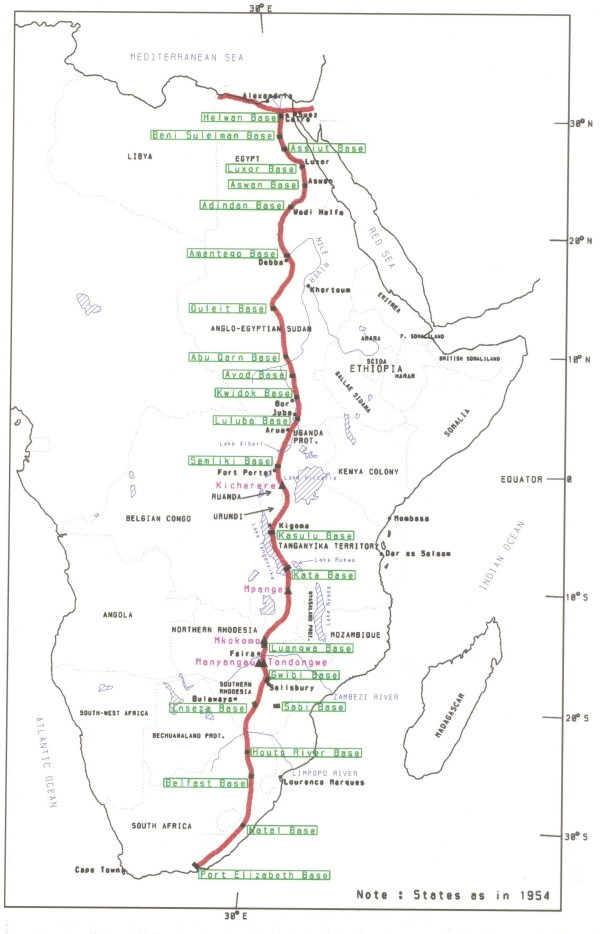Someone once sent me an email asking if I’ve ever been to the trig beacon on Lovemore Heights along with all the information about the beacon. I’d never even heard of it and decided to drive up there, coming up against a closed gate and filing it away for future exploration. After I took up Geocaching I noticed that there was a cache hidden close to the trig beacon and grabbed the opportunity to try and find it again, this time with directions from one of the previous cache finders. The trig beacon is just that, a trig beacon, so there isn’t really something very interesting to see. The story behind it is of a lot more interest though, but I can now finally tick this spot as visited.
 The beacon is one in a series of 26, which are the first set of historic astronomical stations measured in order to establish the groundwork of the Arc of the 30th Meridian. The Arc of the 30th Meridian is a set of triangulation measurements effectively creating an arc from Port Elizabeth in South Africa to Cairo in Egypt through the entire African continent. The purpose of the measurement was to determine the size and shape of the Earth.
The beacon is one in a series of 26, which are the first set of historic astronomical stations measured in order to establish the groundwork of the Arc of the 30th Meridian. The Arc of the 30th Meridian is a set of triangulation measurements effectively creating an arc from Port Elizabeth in South Africa to Cairo in Egypt through the entire African continent. The purpose of the measurement was to determine the size and shape of the Earth.This beacon represents the Southern most point of a chain of triangles Measured along the 30th meridian through Botswana, Mozambique, Zimbabwe, Zambia, Tanzania, Burundi, Uganda, the Democratic Republic of Congo, Sudan and ending near Cairo in Egypt.
Prior to 1999 the beacon was also the origin of the geodetic survey of South Africa.
The project was initiated by Sir David Gill, the Astronomer Royal at the Cape in 1879 and the final measurements were completed in the Sudan 1954.
The arc, known as the Arc of the 30th Meridian, can be connected across the Mediterranean Sea through Crete and Belarus to a similar arc measured through Europe terminating at North Cape in Norway. The European arc is known as the Struve Arc and together these two arcs cover nearly 105º in latitude which is over 11650 Km in length.
Prior to 1999 the beacon was also the origin of the geodetic survey of South Africa.
The project was initiated by Sir David Gill, the Astronomer Royal at the Cape in 1879 and the final measurements were completed in the Sudan 1954.
The arc, known as the Arc of the 30th Meridian, can be connected across the Mediterranean Sea through Crete and Belarus to a similar arc measured through Europe terminating at North Cape in Norway. The European arc is known as the Struve Arc and together these two arcs cover nearly 105º in latitude which is over 11650 Km in length.
This plaque on the trig beacon was unveiled by the President of the Institute of Professional Land Surveyors of the Eastern Cape, Mr C J Bollaert-Davies, on 8 June 2004, 125 years after the initiation of the project and 50 years after the completion of measurements.


Fascinating !!!
What an awesome journey to follow the 30th Meridian through Africa, and maybe beyond.
I was there on 8 June 2004 for the “rededication,” and currently work on the history of the Arc of Meridian. It's a fascinating story in its own right, but it touches geopolitical and local questions all the way up its length. In Egypt it anchors the new Cadastral Survey of H. G. Lyons; on the Highveld it was part of reforming the land titling system of the old Republics; in between it variously allowed for European settlement schemes, the laying out of new towns, hydrographical surveying in the lakes, and the definition of intercolonial boundaries. At the end, in the Sudd region of the Sudan, the US Army finished the work–so they could compute the new figure of the Earth and begin to use space for missiles, satellites, and so forth. The Buffelsfontein point is actually just one of many points in the Geodetic Survey of South Africa proper, which is a curious tale of its own. I'm hoping to visit more of the points between Egypt and Zimbabwe in the next couple of years, but that depends (as so much else) on $$$.